This year's TCM Classic Film Festival is almost upon us, including my Fashion in Film of TCMFF 2019 talk, so I wanted to make sure to share something here on GlamAmor to entertain you while I was away. I could think of nothing better than 1959's Pillow Talk. The film celebrates its 60th anniversary this year and is loved more than ever. Of course this is due to its star Doris Day, a talented actress with a natural gift for comedy. Her chemistry with co-star and friend Rock Hudson made them one of the great screen couples of all time. In addition, Doris had another important collaborator on this film with costume designer Jean Louis. It was Pillow Talk that really helped establish her signature style and its costumes have been influential in fashion ever since. This is where my love for Doris Day all began. In celebration of her 97th birthday, I give you Pillow Talk.
-----
1959's Pillow Talk is one of the most influential movies of all time from the standpoint of style. It is decidedly modern - as accessible as it is aspirational. It is also quintessential Doris Day. After many years stuck in somewhat frilly musicals at Warner Bothers, she moved to Universal and finally had the opportunity to play independent women in sophisticated sex comedies. Pillow Talk was the first. With her strength and style, she became a role model for a new generation of women who were working both in and outside the home. A signature piece of her wardrobe was the sheath dress (or wiggle dress, as it is often called for its flattering fit and the way women seemed to walk while wearing it). It became hugely popular because of this film and virtually synonymous with Doris Day style. Sheath dresses and colorful clothes existed before her, of course, but no one would make them as much a part of their image as she did. Besides her own talent, much of her transformation into the role of urban sophisticate is due to the vision of costume designer Jean Louis.
Many know the great Jean Louis for Rita Hayworth's glamorous wardrobe in Gilda (1946) with its iconic black satin strapless "Put the Blame on Mame" gown. He is also known for another iconic gown - the nude shimmering stunner that Marilyn Monroe was sewn into to sing "Happy Birthday" to President Kennedy at Madison Square Garden. Each and every one of his designs reflected his extensive experience in couture - from Agnes-Drecoll in Paris to Hattie Carnegie in New York where he worked through much of the 1930s. In 1944, he turned from fashion to film and took his talent to Hollywood. After briefly assisting mentor Travis Banton at Columbia, Jean became the studio's head of costume design from 1945 to 1958. There he would establish the style of many actresses, such as Rita and Kim Novak. He then went to head the wardrobe department at Universal and immediately met Doris and started to help her define her signature style.
In Pillow Talk, Doris plays interior designer Jan Morrow, a career gal who proves that a work wardrobe need not suffer in the style department. It was the first of her films working with Jean (along with three-time co-star Rock Hudson) and really marked a turning point for her. "He created a sophisticated allure for Doris that launched a new phase of her career," wrote journalist Tom Vallance. With this wardrobe, Jean highlighted her phenomenal figure with tailored wiggle dresses and brought out the sexuality in her virginal onscreen persona. Friend James Garner - who starred with her in The Thrill of It All (1963, also designed by Jean Louis) - said Doris "exuded sex" while still maintaining her image of the All American Girl. To be sure, she carries off each costume with the grace of a runway model and the body of an athlete.
In an era when costumes were becoming more "realistic" in film, Jean continued to be known for glamour. He frequently worked with Ross Hunter, who produced Pillow Talk as well as Lana Turner movies like Imitation of Life (1959). In fact, much of the reason actresses signed on to do his movies was because they were guaranteed a gorgeous wardrobe by Jean Louis. Jean's overarching style for his stars was sleek and simple, but elegant. He paid "meticulous attention to detail," yet nothing superfluous ever complicated his designs. It's for these reasons that his clothes remain so timeless today. Costumes in these lavish productions really showed Jean's gift with color. It was one of his great talents and something that drew me personally to his designs. Cream and red, royal blue and black, kelly green and turquoise, and red and leopard skin are just some of the color combinations featured in Pillow Talk. "He had the most amazing discerning eye for color," recalls his daughter-in-law Linda Lewis. "It was a 6th sense for him." In a couple cases, colors come from the statement jewelry that Jean integrates into those outfits. He also incorporates luxurious fabrics like fur to evoke even more glamour where coats, capelets, hats, and hand warmers all appear as accessories.
Doris' sheath dresses, her statement coats in their rich colors and textures, and the overall ladylike dressing shown in Pillow Talk are frequently on trend, but these are looks that have always been in style. Rather than being too revealing - such as was often seen with other icons of the era such as Marilyn Monroe and Jayne Mansfield - the sex appeal of these costumes comes from their body conscious silhouettes and the fact that they are fit to perfection. This made their design extremely accessible and the wardrobe inspired many women when the film first premiered in 1959 - from secretaries to housewives. "Pillow Talk marked the beginning of Doris Day sporting fashions that women could actually picture themselves wearing....[She] had evolved into a fashion icon [and] continued to set trends throughout the early 1960s." Further, both Doris and the film have continued to influence fashion designers today. One is Michael Kors, who cited this movie as a major influence when he and other designers were invited to be Guest Programmers on Turner Classic Movies (TCM). Jean Louis' costume design for Pillow Talk has clearly had an impact on fashion both then and now, and so it is included on the list of The Style Essentials here on GlamAmor.
Pillow Talk was so good that it brought Doris an Oscar nomination (her only one) and started a style she would continue in subsequent films, no matter what costume designer was assigned to the production. Irene (Lover Come Back), Morton Haack (Please Don't Eat the Daisies), and Ray Aghayan (Glass Bottom Boat) all followed Jean's lead with her in their designs. Jean would return to work with Doris again on her third picture with Rock Hudson Send Me No Flowers (1964), but Pillow Talk was the first time they all teamed together and with it set a standard for romantic comedies. I believe that her chemistry with Rock as well as her onscreen style from Jean were never better than they are in Pillow Talk. "To this day, it remains the film most closely associated with Doris Day," says author Tom Santopietro, "and solidified [her] image in the public's mind, seemingly forever." Take a look for yourself.
Doris (Jan) makes her entrance in a black coat with a mandarin collar
accessorized with both a black fur hat and hand warmer
Jan's navy "suit," a sheath dress topped with a cropped boxy coat,
taught me that black and blue are indeed colors that can be paired together
taught me that black and blue are indeed colors that can be paired together
This belted cream wiggle dress paired with red accessories is one of my personal favorites
Look at the divine red silk lining of her matching cream coat -
a detail referenced by Michael Kors in one of his early collections
All buttoned up, Jan even coordinates a red tote (below left) with her outfit
Jan attends the party of one of her wealthy clients in this
white column gown, white fur shrug, and opera length gloves
Jan reluctantly agrees to a dance with her client's college-age son,
not realizing that her party line foe (Rock Hudson) is just behind her
not realizing that her party line foe (Rock Hudson) is just behind her
Brad Allen (Rock Hudson) sees and meets Jan for the first time at this club
Adversarial on the phone, Brad must pretend to be someone else in order to see Jan again
A perfect end to Jan's evening -
the promise of another date with Brad aka "Tex"
the promise of another date with Brad aka "Tex"
Another favorite color combination that I learned from this movie is this
emerald green coat and gown accessorized with turquoise jewelry
Out on the town
Another clever use of the split screen in Pillow Talk
Even Jean Louis' robes for Jan are regal
Lessons in tone on tone -
green longsleeve sweater paired with a darker high-waisted wool skirt and hat along with a mink coat
green longsleeve sweater paired with a darker high-waisted wool skirt and hat along with a mink coat
Plans for another evening out, this time in a burgundy velvet coat and dress
Brad's scheme has been found out by his best friend Jonathan (Tony Randall),
so he arranges to take Jan to his place in Connecticut
Passion by fire light
Jan celebrates being in love in a cozy cream belted knit dress
When Brad goes out for more firewood, Jan gets more than just a chill -
she discovers his true identity by playing one of his songs
Furious, Jan throws on her own fur trimmed coat and heads heartbroken for home in the city
In a rage, Jan looks incredible in red accessorized with a leopard hat and hand warmer
Jan's revenge?
To redecorate Brad's apartment the worst way she knows how
To redecorate Brad's apartment the worst way she knows how
She's all business in a black velvet suit trimmed in satin and
accessorized with a brooch at her waist
Brad somehow manages to see how much Jan really loves him by his "redecorated" apartment,
and carries her back to the scene of the crime
Of course what Jan has really managed to makeover is this confirmed bachelor
and they live happily ever after
Thanks
Chris and Linda Lewis
Other Sources
Biography.com
DorisDay.net
DorisDayMagic.com
FilmReference.com
Hattie Carnegie--FashionEncyclopedia.com
Hattie Carnegie--OnThisDayinFashion.com
History.com
Independent.co.uk
Leese, Elizabeth. Costume Design in the Movies. New York: Dover Publications, 1991.
NYTimes.com
Santopietro, Tom. Considering Doris Day. New York: St. Martin's Press, 2007.
Time.com
Biography.com
DorisDay.net
DorisDayMagic.com
FilmReference.com
Hattie Carnegie--FashionEncyclopedia.com
Hattie Carnegie--OnThisDayinFashion.com
History.com
Independent.co.uk
Leese, Elizabeth. Costume Design in the Movies. New York: Dover Publications, 1991.
NYTimes.com
Santopietro, Tom. Considering Doris Day. New York: St. Martin's Press, 2007.
Time.com
VintageFashionGuild.org
Images
All screencaps are ©GlamAmor


















































































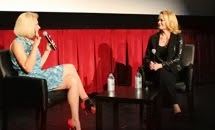
















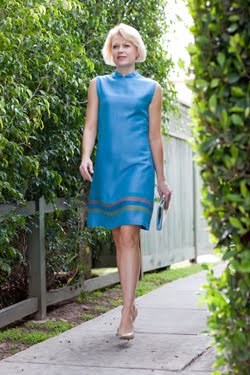







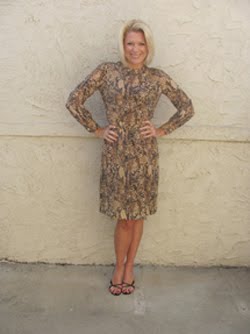

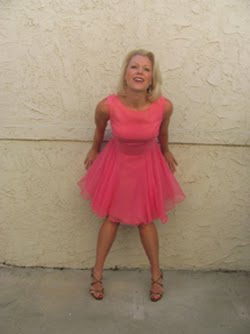






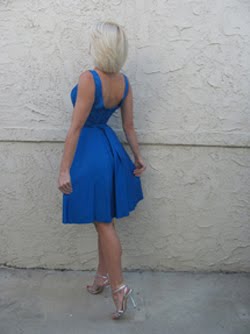






























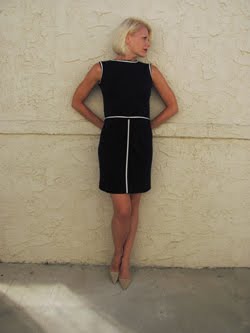


No comments:
Post a Comment